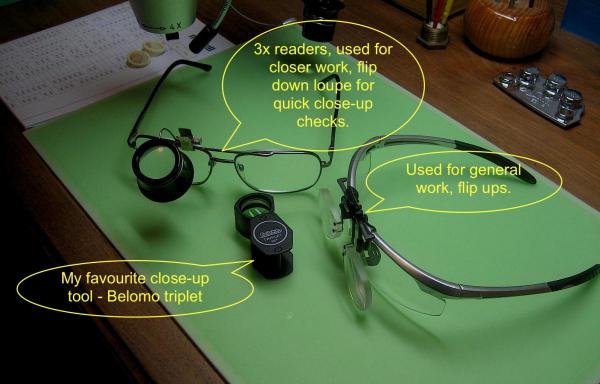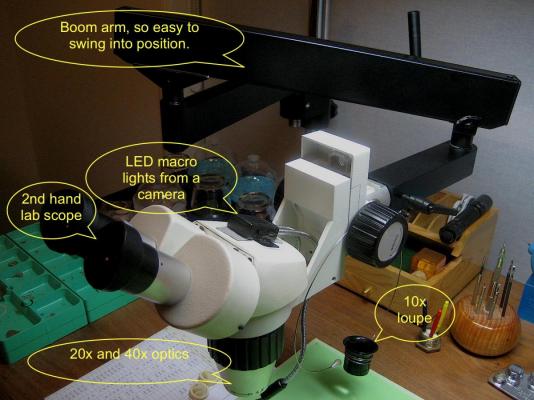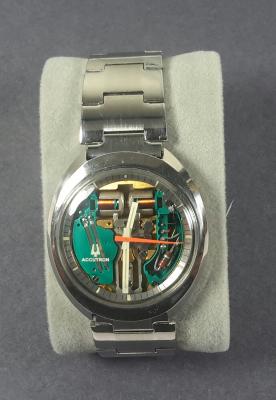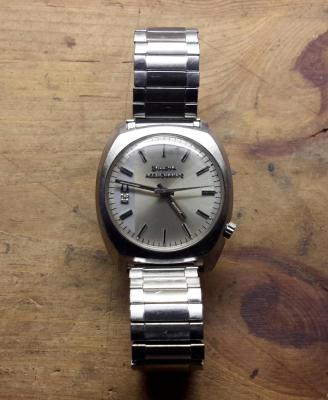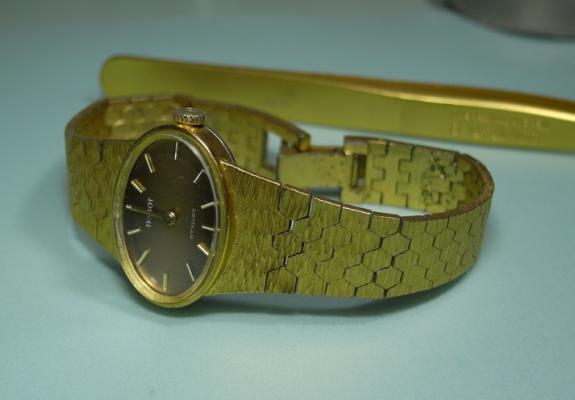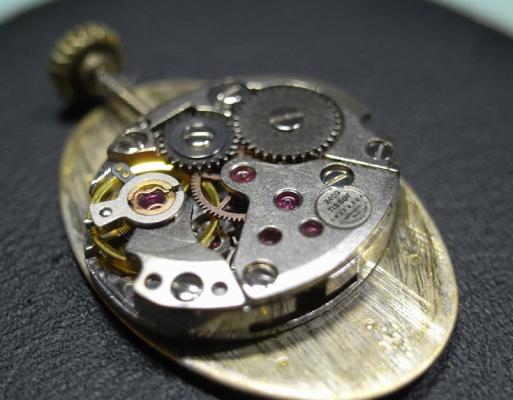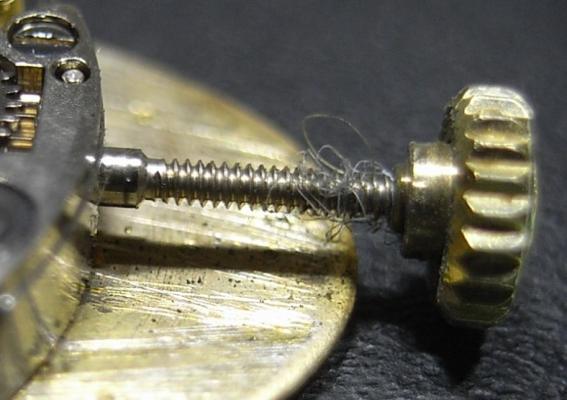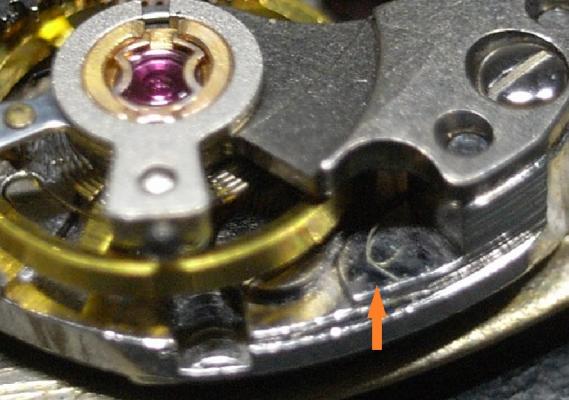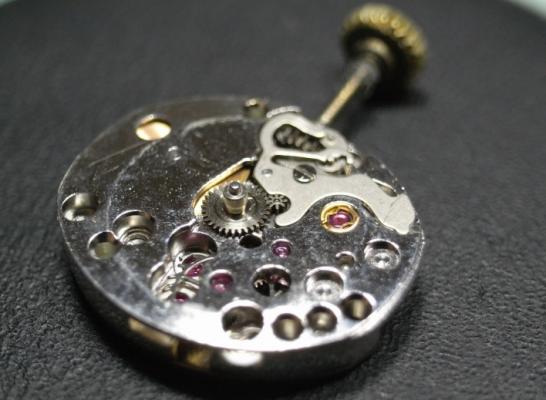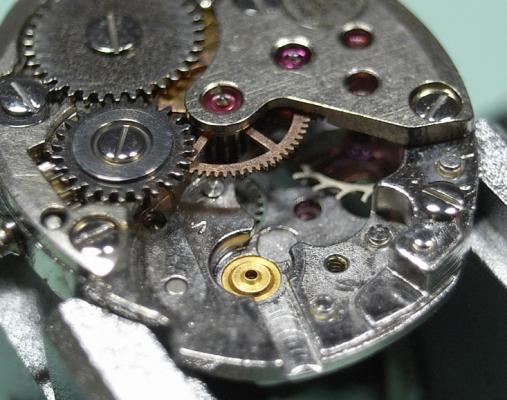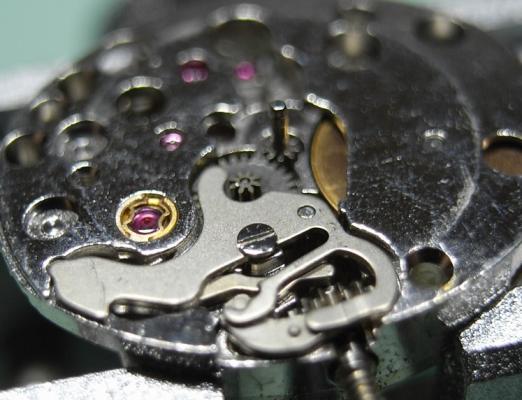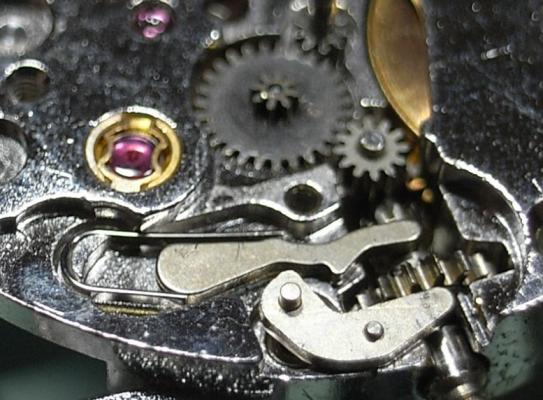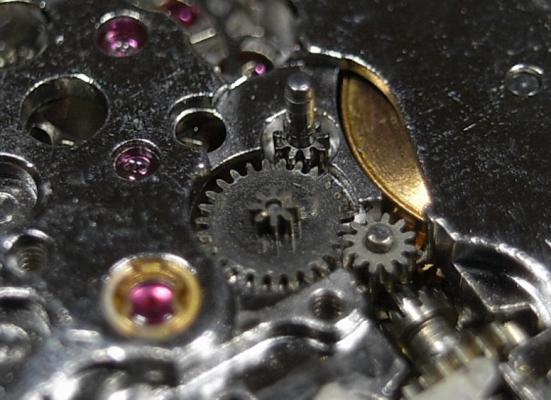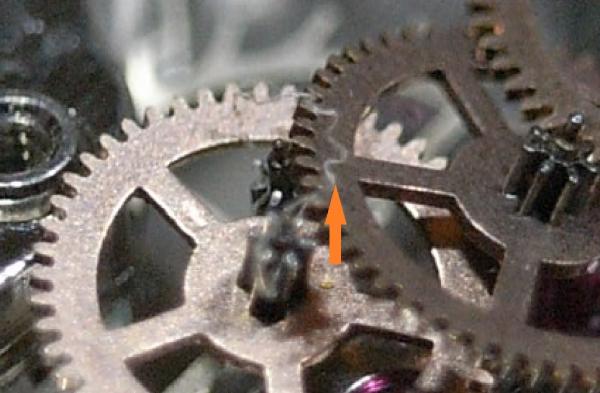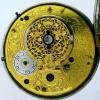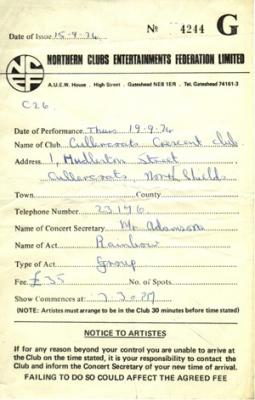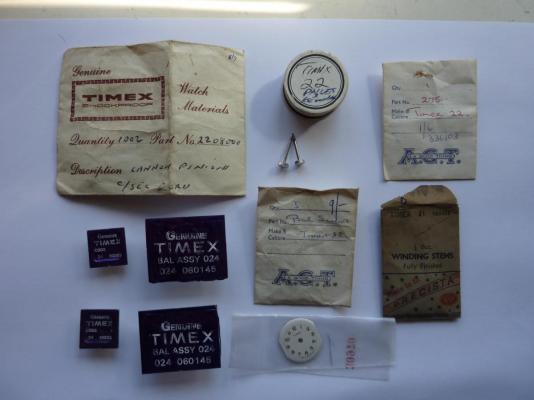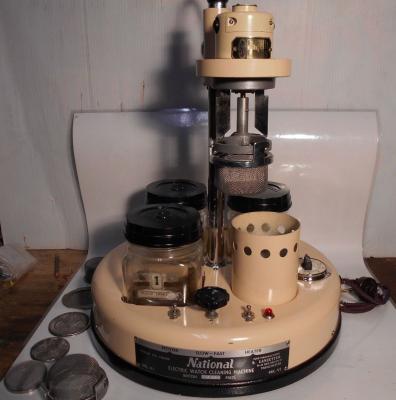Leaderboard
Popular Content
Showing content with the highest reputation on 06/30/15 in all areas
-
4 points
-
Whilst you mention Quartz, here's a few photos of one of my quartz watch restorations. Luckily I have a great contact at Citizen SC in Germany, so managed to get some rare parts from them to complete this restoration, its my own Aqualand Diver. Untitled by Micky Aldridge, on Flickr Untitled by Micky Aldridge, on Flickr Untitled by Micky Aldridge, on Flickr Untitled by Micky Aldridge, on Flickr Untitled by Micky Aldridge, on Flickr Untitled by Micky Aldridge, on Flickr German Aqualand 4 by Micky Aldridge, on Flickr4 points
-
Here's a video of the Seiko Spring Drive system that some of you may not know about. It's very ingenious! https://m.youtube.com/watch?v=FbmKZ5JXyjo3 points
-
3 points
-
Just a little story about clocks. When I decided to retire from watch/clock making, I was approached by two antique dealers who had their own shop in a nearby town, they said I had been recommended by someone and they wanted to start to sell antique clocks but knew nothing about them. Anyhow I agreed after they said I could do all the repairs, go around the antique sales rooms and buy what I thought would be good for them to sell in their shop, they gave me a limit each time. I also used to value clocks for insurance. This was a wonderful experience because I saw all sorts of bodge ups and what are known as marriages (this is when a movement is fitted into a different case common in Longcase Clocks) I decided after about two years to call it a day by then It was getting to much for me and the excitement ended. After a very long time away from work I wanted to do something completely different and I went into I T and ended up teaching. I hope all of you enjoyed my little story.2 points
-
A word of caution on the cheap binocular loupes. I tried a set and found them to be extremely difficult to use. You have to adjust for inter-pupilary distance and then change the sight angles so each eye converged at a focus distance. Every time I made one adjustment another was required. They came mounted on safety specs so I ditched the loupes and used a clip on pair of magnifiers. With these I can see most detail work and flip them up for distance vision. For close-up I use a loupe on a head spring and for really close up I have an old lab microscope from eBay. I got a boom for it and use it for oiling etc. I'll post some pics after dinner, I have to cook some nice fillets of rock ling while Ms Jim does the veggies.2 points
-
I make no secret of my admiration for Timex mechanicals, not because of their Rolls Royce build quality, nor their "no expense spared" choice of materials, but because of their design. That's right, their remarkably successful design. No, they're not easy to service in the "Swiss tradition", but if they are serviced the way that they were designed to be serviced then they are a cinch. What's more, because they were so cheap in the first place, and because watchmakers, who insisted on trying to fully strip the movement to service it and therefore needed to charge twice the price of a new watch to do so, nobody bothered, and yet they still turn up at car boot sales, 50+ years old and beaten up, and still run (just about), and run properly after a half hours service (the way Timex intended). They were never intended to perform to COSC chronometer levels of accuracy, they were designed as a cheap utilitarian time keeper for the "every day man on the street", requiring the minimum of maintenance to keep going. And they do. The "V-conic" balance staff had no shock protection and yet I've never come across a Timex with a broken balance staff, despite some of them looking like they'd been through a cement mixer. Timex even strapped one of their watches to the prop on an outboard motor and ran it under water for one of their ads with no apparent ill effect. A lot of people deride Timex watches and yet they sold in their millions, and as for achieving their design objectives, they out did many other brands costing 10x as much. As for the Cotes Du Rhône, I have to be careful not to focus the mind too sharply on a school night but may well give it a go at the weekend.2 points
-
Tissot 2403 Service Walkthrough What is it with me and small movements?! I seem to attract them in absurd numbers. Oh well, here's another one to push my Zeiss optics to the limit, a Tissot 2403. My brother's father-in-law found this at the local rubbish tip, thrown away and unloved :( Upon initial inspection the condition looked dirty but not marked up, Canon Pinion felt good when setting the hands, and it seemed to wind smoothly. But alas it wasn't running at all. So to the bench I go, and de-case this little gem of a find. It removes like many ladies fashion watches, with the movement cradled in the Caseback. I removed it from the Caseback, and it looked remarkably clean. So I gave it a close inspection to see if there was something obvious that was stopping the movement. First thing that stood out, and is common on these types of movements, is the lack of a Crown Seal. As you can see there is a lot of contamination along the Stem, including nylon fibres ... perhaps from the sleeve of a sweater. I continued to look and found more of these fibres near the Balance. Continuing my inspection it was obvious that this watch was in desperate need of a complete service. Note the condition of the jewels. But besides a strip and clean, I couldn't see anything else wrong with it. No rust, nothing bent or broken; just some contamination stopping it from running. It's sad to see we live in such a throw away society today, 50 or 60 years ago this would have never been discarded on a tip. Ok, time to bring this watch back to life. First step as always, release the tension from the Mainspring, and remove the Balance and Pallets. Now the Balance and Pallet Fork safe, we can remove the Keyless Work. Start by removing the Hour Wheel, then the Setting Lever Spring. Then remove the Yoke and Setting Lever. Be sure to secure the Yoke Spring with Pegwood and note is orientation. Then remove the Minute Wheel and Setting Wheel. Then pull the Stem, and remove the Sliding Pinion and Winding Pinion. Flip it over and remove the Ratchet Wheel and Crown Wheel. Then you can remove the Mainspring and Train Bridges. As you can see, even if this watch was running, it would have not been giving accurate time. All the jewel holes are filthy! Here is a reference shot of the train on the 2403. Now, if you had good eyes you might have seen it. The object that stopped this watch from running. You guessed it ... a nylon fibre has found it's way into the wheels of the train, and gotten jammed between the Intermediate and Third Wheel. So know the mystery is solved, it's just a simple matter of cleaning and re-assembly. To Be Continued ......1 point
-
I'll be back with more time. I got my bench full of watches and it will help me decide which one to finish first...they are all classified as "work in progress"...so many watches, so little time!1 point
-
The point is that it is not true to say that Timex watches "were never made to be serviced". They were, and Timex published information on precisely how they were made to be serviced, and supplied service parts for that purpose. That is not to say that the Timex service procedures were the only ones that could be applied, and I'll wager that many watchmakers felt, as you do, that the Timex method was in some way inadequate, and therefor a poor substitute for "proper" methods. This would almost certainly lead to a belief that they were not really meant to be serviced at all. However, the "proper" way to service a watch is also the expensive way to service a watch, and that is precisely what Timex was not about. They developed calibres, and processes for servicing those calibres, that were, in their view (as the manufacturer) adequate, and that would keep the cost of servicing down. You can't even argue that Timex were trying to increase the failure rate of their movements and so drum up more sales as people replaced watches that had failed due to inadequate servicing, as cheaper servicing would mean that people would be more inclined to get it done, and faults detected and corrected before they became failures. Also, increased failure in a brand, even when the the manufacturers service procedures had been rigidly adhered to, would lead to poor brand reputation and a reduction in sales. No, the processes recommended by Timex for their calibres were (and still are) adequate for the way that those movements were designed. This is kind of what I was getting at when I referred to watchmakers being reluctant to adopt different processes. The full strip down, clean, inspect, and lubricate service is the only appropriate approach for movements designed with that kind of attention and budget, which covers the vast majority of mechanical watches, and in those instances I wouldn't advocate anything less. However, it's horses for courses, and Timex movements were designed differently with different requirements. Perhaps an analogy would help illustrate here. After just about every race, practice session, set up session, qualifying session, etc, a F1 car engine and transmission is stripped, cleaned inspected, and then put back together again with fresh oil (Swiss approach). My Ford Mondeo gets its oil and filters changed every 10k miles (Timex method). I would be mad to adopt F1 procedures for my Mondi, and an F1 team would last less than 5 seconds if they left the same oil in for 10k miles. Don't get me wrong here, I don't champion Timex watches because they are the best that you can get. But I do think that they do what they were designed to do (cheap time keeping that was also cheap to maintain) extra-ordinarily well. Each to their own though :thumbsu:1 point
-
Out of interest here is what we got paid for 3 sets (yes we actually got paid) starting at 7.30pm and we usually got the van loaded up by 12.00pm and made our way home. The guy with the hair is Colin Cole (Keyboards), lovely bloke and classically trained. We did the clubs for about 5 years and even backed up the strippers. Cheers, Vic1 point
-
"If you sent a Timex watch back to them they would replace the movement or replace the whole watch." This is quite a common practise within a lot of manufacturing industries. If an item is returned to the factory it is often replaced as a unit because the cost of stripping down, diagnosing, repairing, and then reassembling far out weighs the cost of lifting a complete new unit off the assembly line or out of stock, plus the time period that the customer is without the item is significantly reduced. Generally speaking the failed item that has been replaced then goes into the company's QC department for the failure to be investigated and any lessons regarding design or manufacturing processes learned. As such the failed item has a value to the manufacturer. And this is not just limited to cheap products, I believe the manufacturers recommendations regarding the servicing of the Dubois-Depraz chrono modules found in many high end chronographs is to return to base for a swap. "Even the buttons never screwed onto the stem they were just pushed on." It's true that for some Timex calibres the stems were made and supplied with the crown permanently fitted. Although this meant that generic replacement crowns couldn't be used, it did mean that if a watchmaker ordered the correct Timex replacement, there was no fettling or fitting required to get it all to fit and function correctly, entirely in accordance with Timex's philosophy of making life easier for the watchmaker. "You couldn't get parts for Timex watches" I wonder what these were for then. I got them in a job lot from the disposal of an old watchmakers estate. He worked out of Aldeburgh in Suffolk in the 60's and 70's and only gave up on watch repair in the 80's when the quartz revolution seemed to reduce the work to battery changes and strap adjustments. Incidentally, the Timex 21 stems are, as the packet says, fully finished, complete with a thread all the way to the end, ready for a screw on crown. "I'd like to know how would you take apart a cheap movement with no screws but with rivets that are closed over by machine and aren't intended to be opened. not only open it repair it and put it back together. I'll tell you, you couldn't." Have a look here; http://timex.digidep.net/manuals/ Service manuals and bulletins for over 40 different Timex calibres.1 point
-
1 point
-
I plan on investing in a stereo microscope as some point with long reach boom, but for now, I swear by my Optivisor.1 point
-
So it looks like bronze tweezers are much harder to find than some other tweezers. I think some of the links I have you've already seen but there are some European companies in the list. Then Bergeon your material houses in Europe should be able order direct from them. http://www.amazon.com/HOZAN-P-893-Hozan-Phosphor-Bronze-Tweezers/dp/B0028DE148 http://www.hozan.co.jp/E/catalog/Tweezers/P893.html http://www.jewelerssupplies.com/product6640.html http://www.schurch-asco.com/e-shop/catalog/product_info.php?cPath=101_103&products_id=293&osCsid=414b8404fd86a37276165f1b0d1d1e59 http://www.ebay.co.uk/itm/Bergeon-Bronze-Tweezers-/381061034414 http://www.boley.de/en/shop/1572.watchmaker-special/1838280346.tweezers1 point
-
I know Timex pretty much symbolises the lower end of the market and the mechanicals don't lend themselves to servicing but when all's said and done many more people will have owned and enjoyed a Timex than will have owned a high end watch. I came to this forum as a complete novice and I remain a complete novice, as I've never serviced a watch in my life. Having said that, I'm a helluva lot more capable of servicing a watch now than I was before I joined simply because of the enthusiasm of all the members on here and their help and encouragement. A group of complete strangers who have become familiar, and even friends, simply by exchanging info and support for the shared passion that is watch collecting and repair. A watch is a watch is a watch! Rolex, Timex, Artex, Lurex! When a mechanism is ailing, my instinct is to try and fix it. The Bergeon Basher should be an absolute last resort, otherwise what are we? (I highly recommend the cheap Cotes Du Rhone from Carrefour - it focuses the mind wonderfully!) 'Night all!1 point
-
Getting the balance swinging after major surgery, or finding a part on the floor after 15 minutes looking1 point
-
I had to modify the link slightly. Here is the link. http://www.windingstems.com/ebosa.php1 point
-
For me finding the reason for a fault & fixing that fault. A real sense of achievement :woohoo-jumping-smiley-emoticon:1 point
-
Hi Stephen, Those seem pretty useable. No matter what you get you should always dress them. Brass is hard to get since the best ones are Dumont and nowhere to be found at any price. The other, regular kind, -- antimagnetic, stainless Steel, etc -- are not too good unless again you get Dumont. Bergeon and Horotec make pretty good ones too...they are all expensive. One thing about tweezers and optics is that you always get less than what you paid for. I've had somewhat and ephemerous results with cheap tweezers as long as I was constantly dressing them. As you might well suspect, the whole point is to minimize flyers and damage to parts in addition to a reliable grip. I tend to use my tweezers rather abusive so dressing has become like a second nature to me...kind of like the way butchers iron their knives... :) Cheers, Bob1 point
-
Hello peng99. The first are tools used for altering timing screws on a watch balance wheel. 2 & 3 look like chamfering tools, but I'm not sure about the looks of some. I wonder if some are for work in dentistry. 4, Although a little fancy I would say there purpose is the same as 1. 5, Is a screw plate with what looks like small taps. 6, Broaches these are used for opening up the worn hole and fitting a new bushing to the worn hole. 7, Don't know apart from dentistry tools. 8, Look like centre punches or scribers but they don't look thin enough for scribers. 9, The four small tools are what they say there from a KLF kit for shock absorbers all to do with the balance of a watch and its jewelling. Bergeon tool I'd like to see the other side. The last one I don't know apart from some sort of gauge. I had a lot of old dentist drills and chamfering tools and darn good they were, they would go through anything. I think you're going to get some really good suggestions on what they all are.1 point
-
So normally with watch repair we like to repair first clean second. So your balance wheel is doing exactly as it was before indicates something wasn't repaired before cleaning possibly. At one time when watches were lubricated with natural oils they have a tendency to gum up which is actually an outstanding characteristic. So for instance American pocket watches great grandpa’s watch comes to a stop it is put in a drawer someplace years later comes out simple cleaning fixes the problem. But today the lubricants especially the synthetics can do just about anything. The definition of anything means they can gum up, chemically break down, spread themselves so thin effectively they disappear basically no longer lubricating and conceivably still function way beyond a perceived normal servicing interval. In other words you cannot rely on the oil to safely protect the watch by gumming up and stopping it. Then even if the oil does continue to lubricate indefinitely it can pick up contaminations rust for instance dust and becomes a super nice grinding compound. So when you’re checking the cap jewels to make sure they’re facing the correct direction you also want to be looking very carefully at the pivots.1 point
-
This is extremely common problem for people not familiar with Incabloc. So the link below takes you to a video which explains how it works. At the very beginning where it shows the components it shows the cap jewel incorrect as it appears to be flat on both sides. It's not until you get to the side view do you notice that is flat on one side curved on the other. So if the jewel is in upside down there will be zero end shake and the watch more than likely will not run.1 point
-
Hope you did a pointy dance like in Saturday Night Fever. PS was it the Blue Oyster Bar, loads of guys with moustaches leather vests and trousers, some may have been wearing Native American head wear or white safety helmets or Stetsons - always a fun night :cool: If its embarrassing photo's we are sharing - unfortunately I am wearing the stetson Cheers, Vic1 point
-
1 point
-
1 point
-
"Finger agitation" now there's a technical term I must remember! :)1 point




